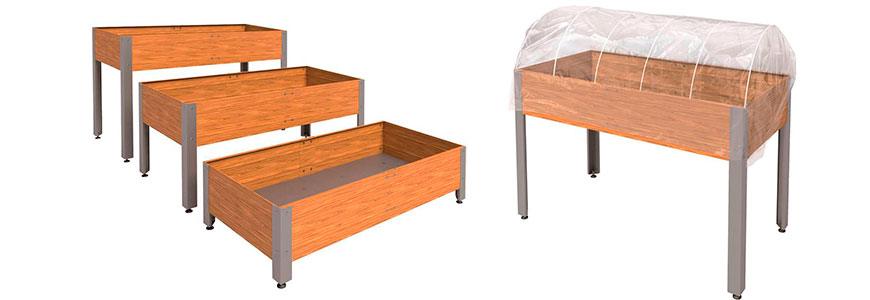- Farm and home
- 4270 views

The cultivation tables are today a fundamental production tool for urban agriculture and are an essential element to generate green spaces in developed cities that have lost their lung by the growing population. So the idea is to have our own crops on the balcony, just steps from the kitchen, making a better life stile and above all creating a responsible and healthy eating.
Together Dicorne and COPELE have developed cultivation options that could be implemented in big cities. There are several alternatives that perfectly fits the climatic conditions that the cities have to offer. With easy handling and certified material, cultivation tables COPELE guarantee the quality for our home vegetables.
What can we plant?
- Lettuce: grows very fast and all year.
- Radish: in 30 days and you have it in the salad.
- Carrot: it will not give any problems. It takes 10 to 20 days to germinate.
- Tomatoes: With pruning the tomato and removing excess of buds we will have any variety.
- Peppers: for multiple uses in the kitchen and in agribusiness.
- Eggplant: with beautiful purple flower to decorate our home.
- Chard: Very easy to grow, without paying much attention it could give leaves up to 6 months. Within 50-60 days we'll be reaping.
- Spinach: It takes up very little space and Its growth is fast. Surely the best choice.
- Aromatic herbs: basil, parsley, bay leaf, thyme or mint to the ends of our table culture generate help with pests and diseases in our crops.

How can we start our urban garden
- Necessarily it has to be a sunny position. Without it, there is no growth.
- The plants that better resist the lack of light are: spinach, cauliflower, cabbage, radishes and lettuce.
- Peppers and tomatoes need plenty of sun.
- The best substrate is vermicompost 50% + 50% vegetable fiber such as coconut fiber or other vegetable fibers.
With this, we will have good root development and good moisture retention.
Tools to be used
- A shovel for transplants and substrate mixtures.
- Scissors, pruning and fruit picking.
- A rake to remove and level the surface.
- A watering can.
- Spray to treat pests and foliar fertilizer applied.
- Optional: thermometer, magnifying glass and pH meter.
How to make irrigation
- Frequent and light risks as the shallowness of the cultivation table, the substrate has less storage capacity.
- The best time for watering is in the evening to avoid evaporation.
- With coconut fiber as substrate it will have better moisture.
Features of the fertilizer
- Plants feed substrates through their roots.
- The vermicompost and coir have these necessary nutrients. So you do not need fertilizer for 4 years.
- Of course, between crops its necessary to reverberant humus.
